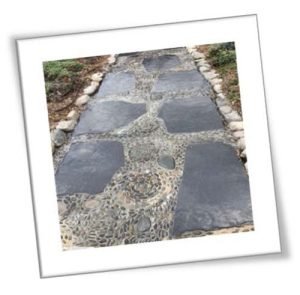
Dear Friends Who Read,
Hush and I have a long relationship. When I was very young, we met in Grandma’s lap. “Hush now, hush” she would whisper, warm breath tickling my tiny ear. “Hush, little one, hush.” Eventually I learned to hush myself into a receptive state of stillness. Over time, meditation and prayerfulness deepened my practice. Be still and know. When Hush is good, it is very good. And we want it to be good for others.
I heard too much creative clamor when I started working on The Beacons of Larkin Street, my first novel. My mind was cluttered with ideas and desires, opinions and emotional reactions. Soon the fictional characters began to introduce themselves
- Lesbian Beka and married Dot arrive fully embodied as a white researcher and a black social worker.
- Transgender Paige communes with angels, saints and mystics.
- Widows Hope and Rev Ruth long for connection, seeking to open the author’s heart to their sorrows.
- Haitian immigrant Millienne prays with her bare feet on Mother Earth.
- Undocumented Luz suffers in silent misery, unable to bear telling God what is happening to her on streets of San Francisco.
- Caro from Cleveland brings charisma, addictions and lust to the Haight Ashbury.
- Arsonist Red aches from maternal neglect and yearns to belong at Saint Lydia’s.
- They all seemed to know something I did not yet know.
- All these females need safety to express their truths. How could I protect their vulnerable voices from my authorly intrusion?
The Hush helps me figure it out. Someone said people make the path by walking. Authors say writers make the path by writing. My inner voice says hushing is the path to the heart of my novels. The Beacons and the Rev help me figure out what is useful and what isn’t. First, they say, write up a storm. Set aside the messy first draft, Let the screen of your mind’s eye go blank. Wait receptively. In my busy mind, the Hush creates space for fictional women to articulate hidden traumas, longings and fears.
- In the Hush, Rev Ruth wrestles with inherited doctrines, gradually discovering which beliefs are false and which ring true.
- In the Hush, Beka and Dot design an ingenious way to trap and expose their predatory pastor.
- In the Hush, dialogues between Hope and Rev Ruth, Dot and Beka, Millienne and Paige raise central questions about loss & leadership, faith and practice.
- In the Hush, Luz heals from sexual abuse by letting the women of Saint Lydia’s care for her traumatized body-mind-heart-soul.
- In the Hush, Beka and Caro struggle through attraction, betrayal and recovery.
- In the Hush, Paige befriends firebug Red and assists the congregation in forgiving the girl who torched their sanctuary.
The Hush brings third-person objectivity to a struggling author. Once freed from the weight of my authorly opinions, The Beacons and the Rev showed me a wideness in their path of congregational leadership. These church ladies made the path wide enough to liberate themselves, each other, and females who suffer unjust treatment. In order to hear their truths I had to quiet my own opinions. The Hush gives space for fictional women to reveal when they are fooling themselves and when they are being true to core values as they reckon with the complications of past, present and future.
My four interlocked Beacons novels mirror the racial and gender diversity of church ladies in San Francisco during the 1970s. Earnestly searching for transcendence, the Beacons and the Rev create a sacred chalice for readers, too. Enfolded in the Hush between tensions and conflicts, readers can also grow spiritually alongside the women of Saint Lydia’s. Readers like you can uncover your own interior truths through inward reflection. Some of you already express your faith-based witness through community-based social action. Others are finding your way. Welcome to the Beacons series.
Tenderly,
Judith